In photos: Assam, Bihar, and Mumbai reel under the fury of the great Indian monsoon
Every year, Indians wait with bated breath for monsoons to bring respite from the oppressive summer. And nearly every year, the rains come with a fury that destroys public infrastructure and croplands, displaces millions of residents and, in extreme cases, has a huge human toll.
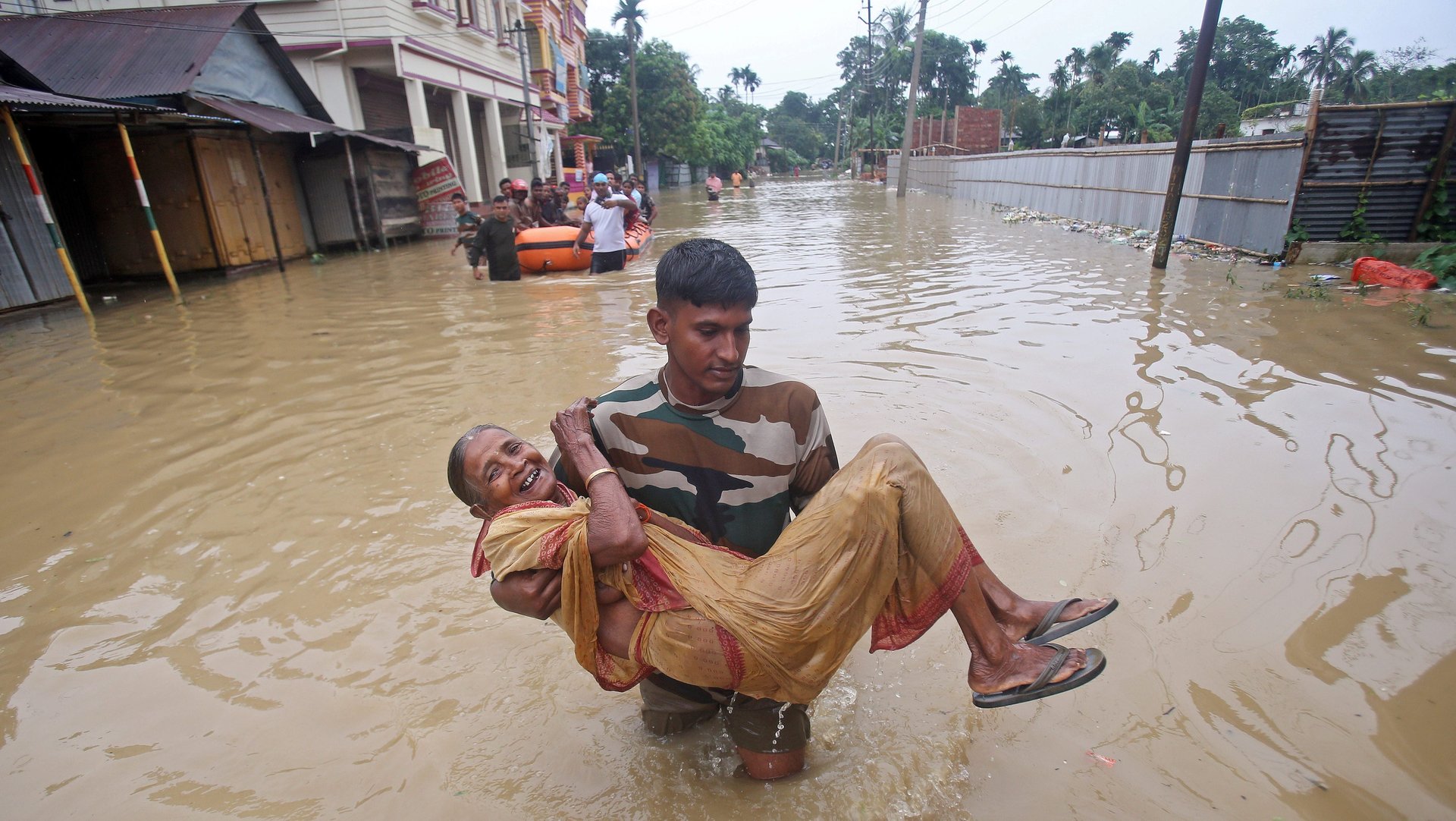

Every year, Indians wait with bated breath for monsoons to bring respite from the oppressive summer. And nearly every year, the rains come with a fury that destroys public infrastructure and croplands, displaces millions of residents and, in extreme cases, has a huge human toll.
This year, Assam, in the country’s northeast, and Bihar, in the east, are facing floods that have displaced over 8 million residents and killed almost 100 people. The Brahmaputra river—which flows through India, Bangladesh, and China—has swollen to alarming levels, and subsequent flooding has killed almost 27 people in Assam.
Meanwhile, Bihar is battling to curtail its flood-related death toll, which has already reached 67. On July 15, The New York Times reported that the number of deaths in Nepal, which shares its border with Bihar, had reached 68.
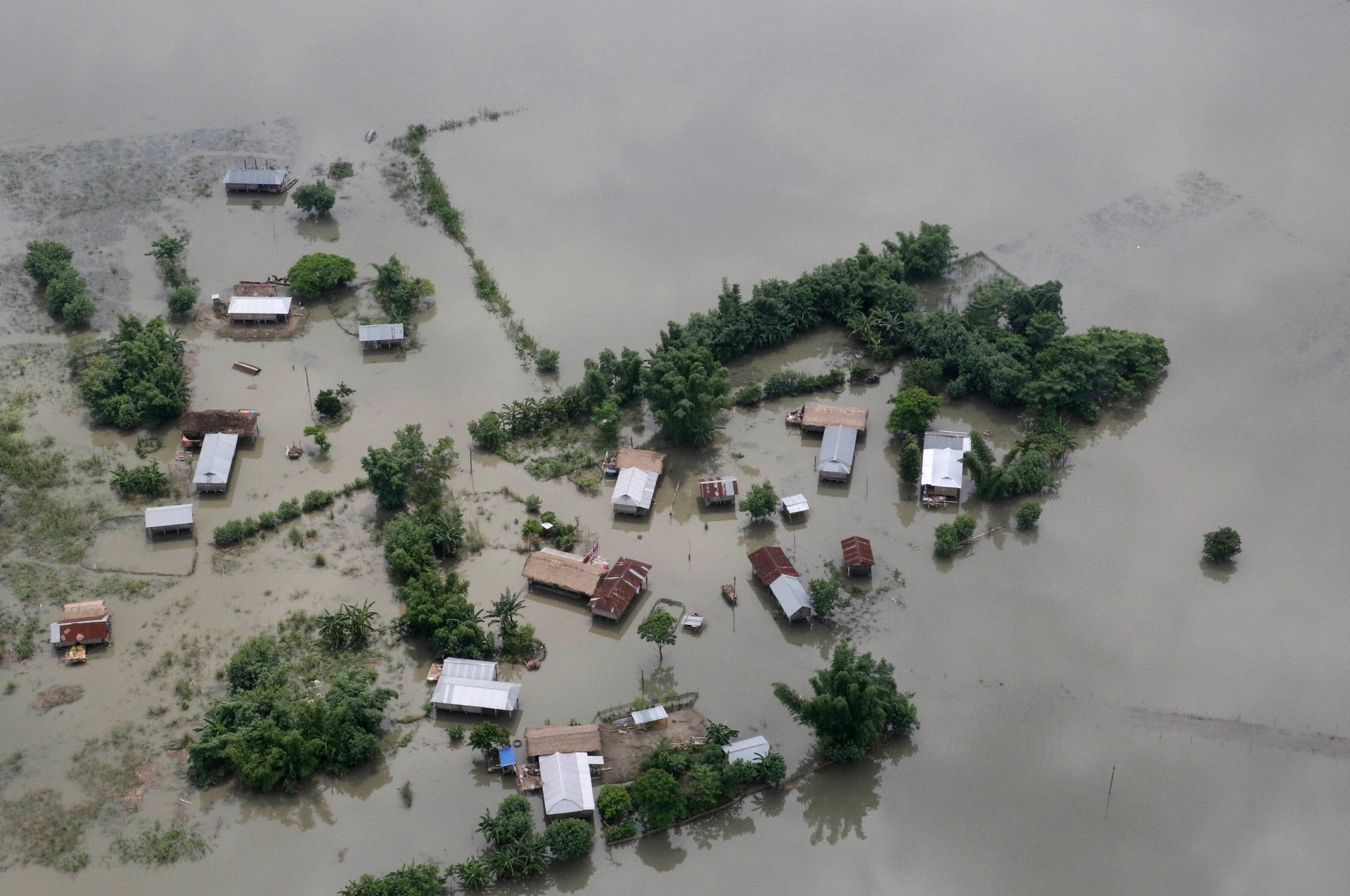
Assam, which is known for its lush tea plantations and diverse wildlife, is battling the rains to save its precious rhinoceros population. So far, 38 hog deers, five rhinos, one elephant, three sambars and four wild boars have died, according to a report in The Indian Express.
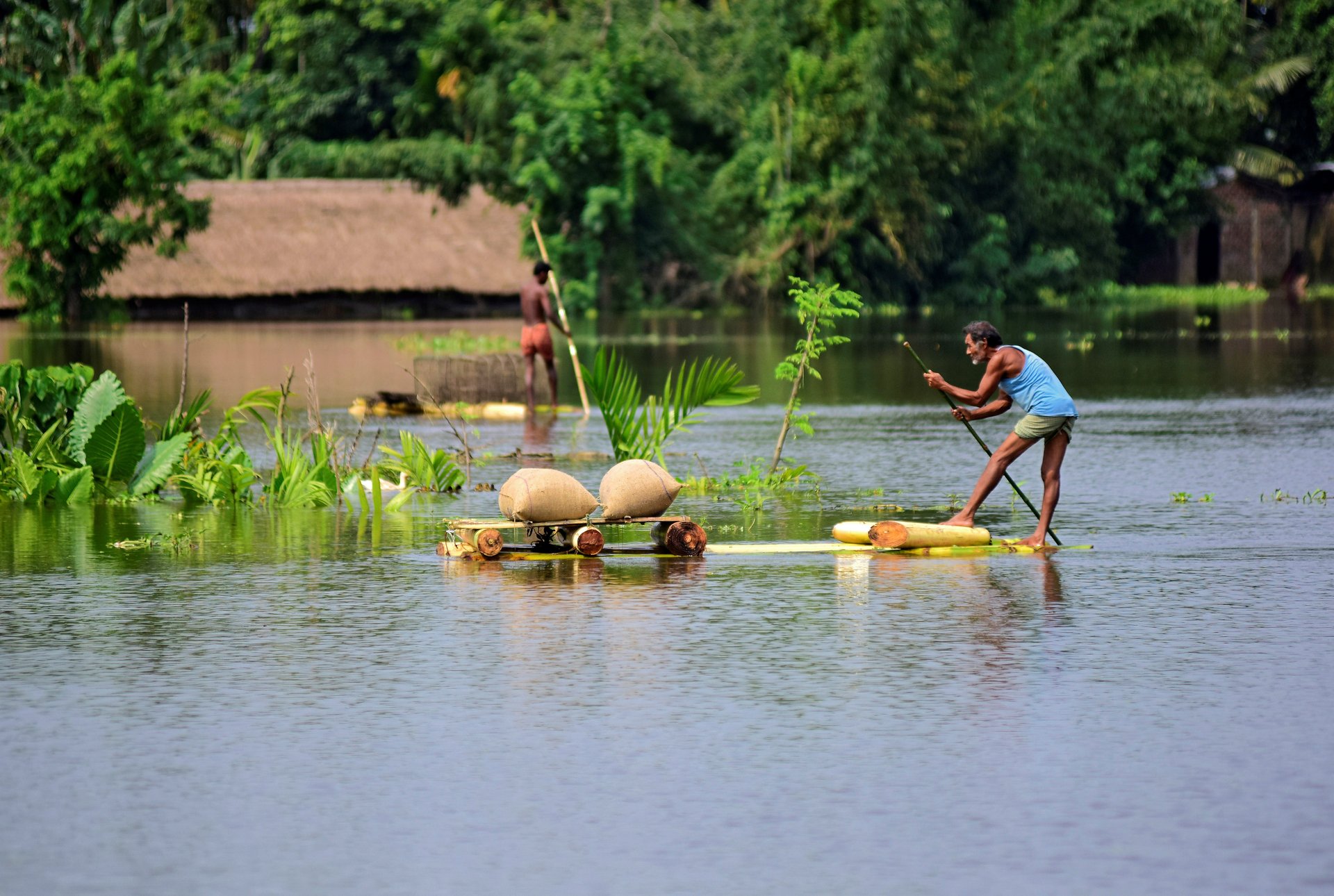
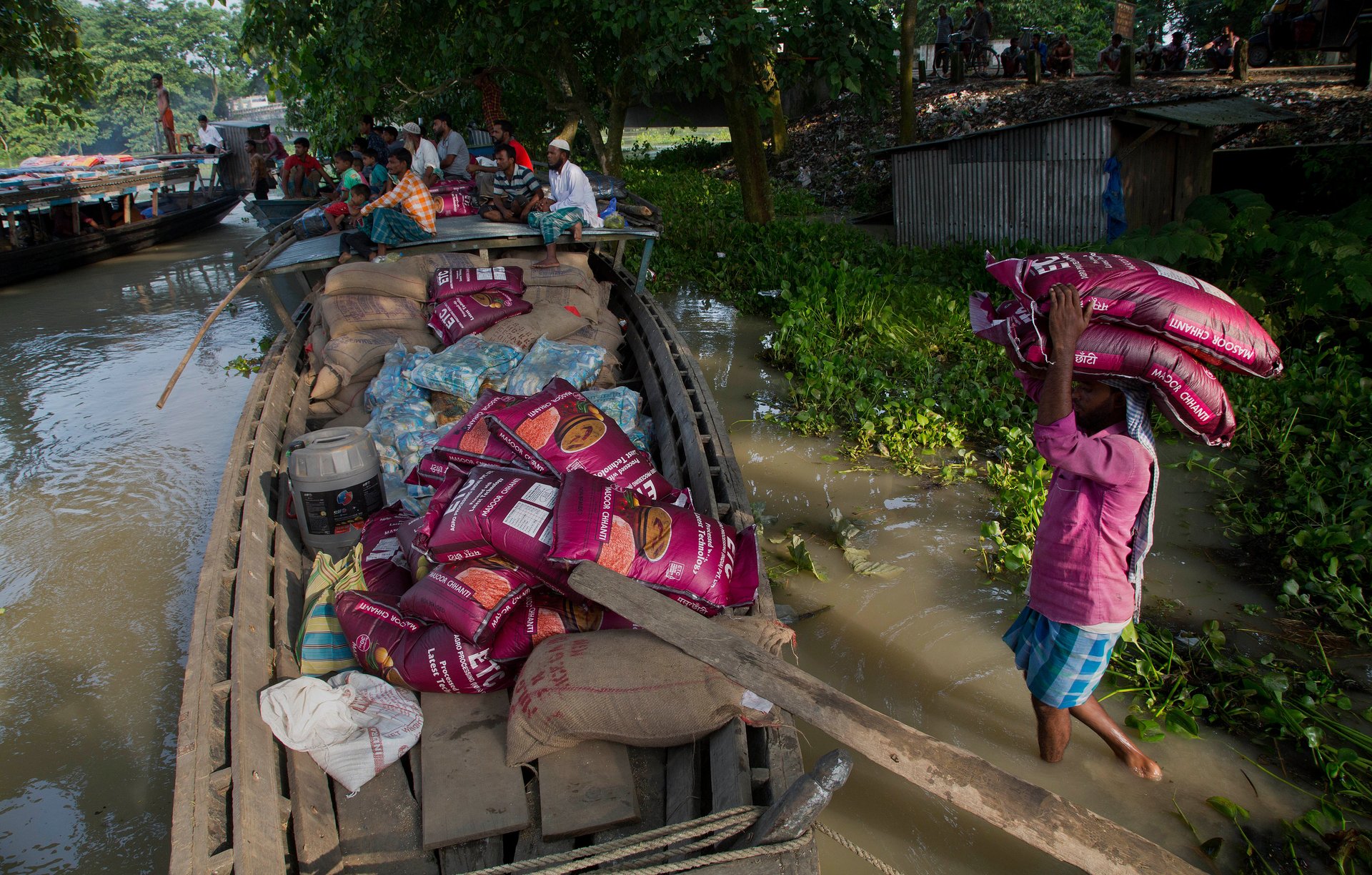
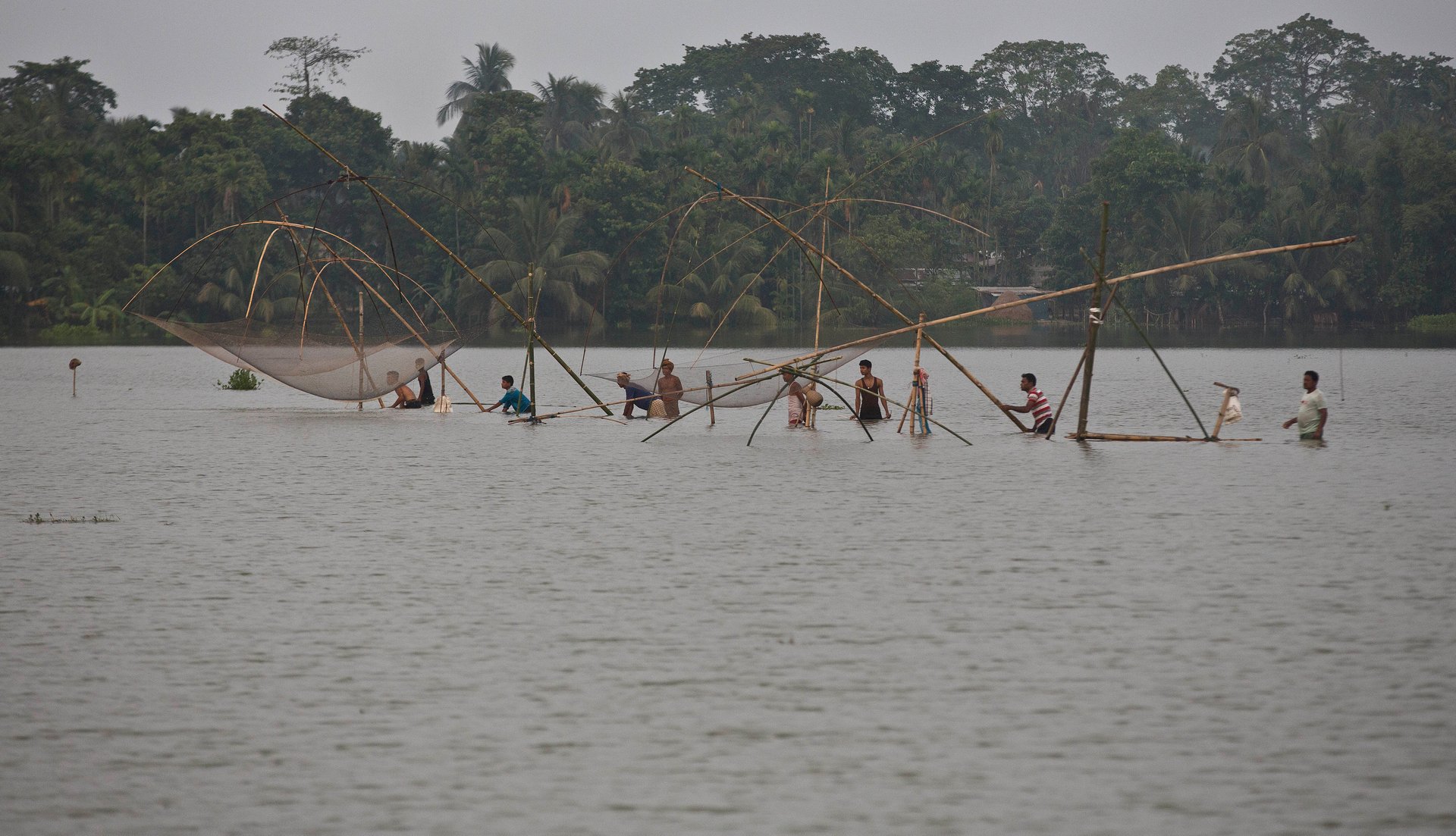
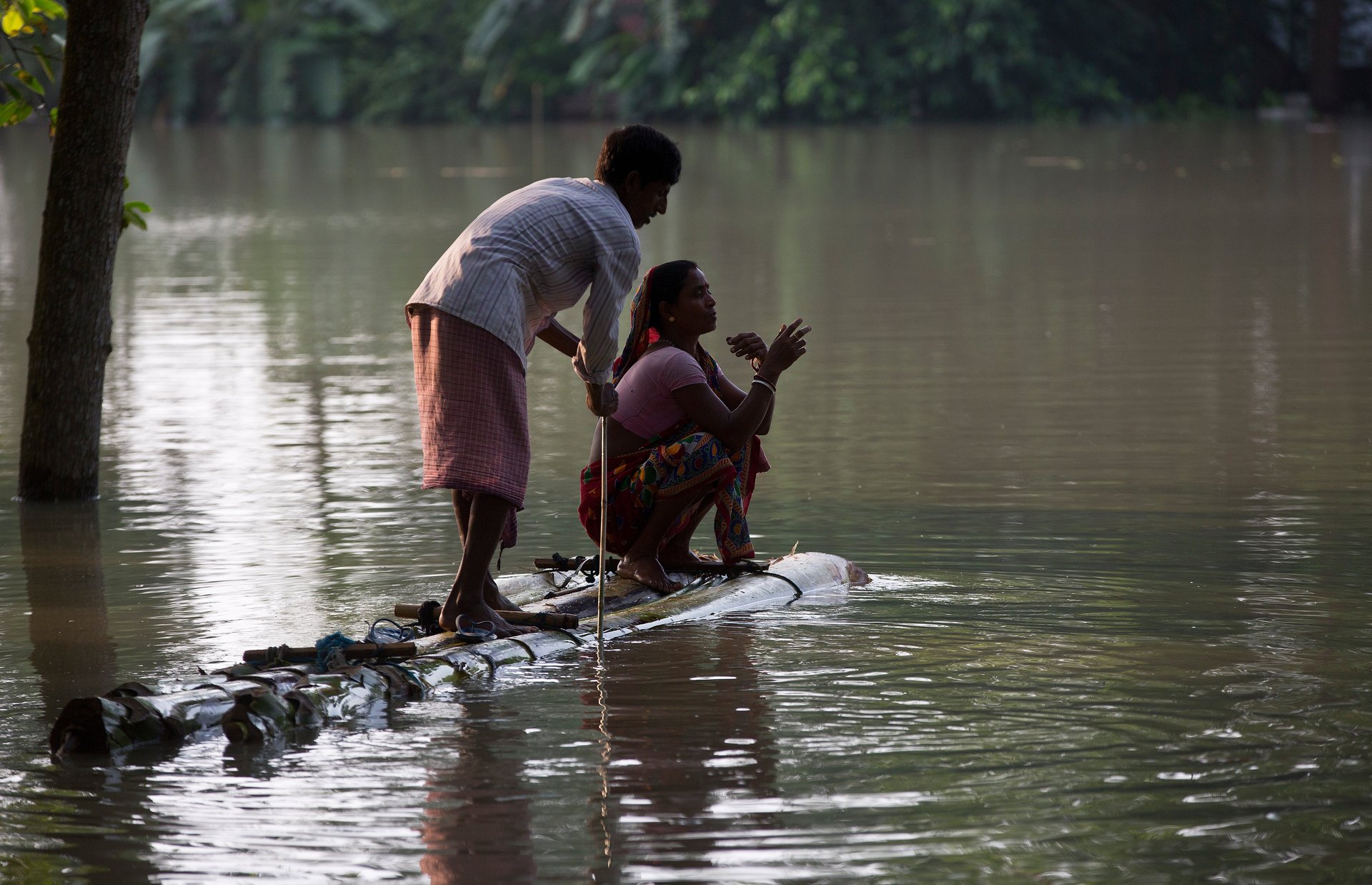
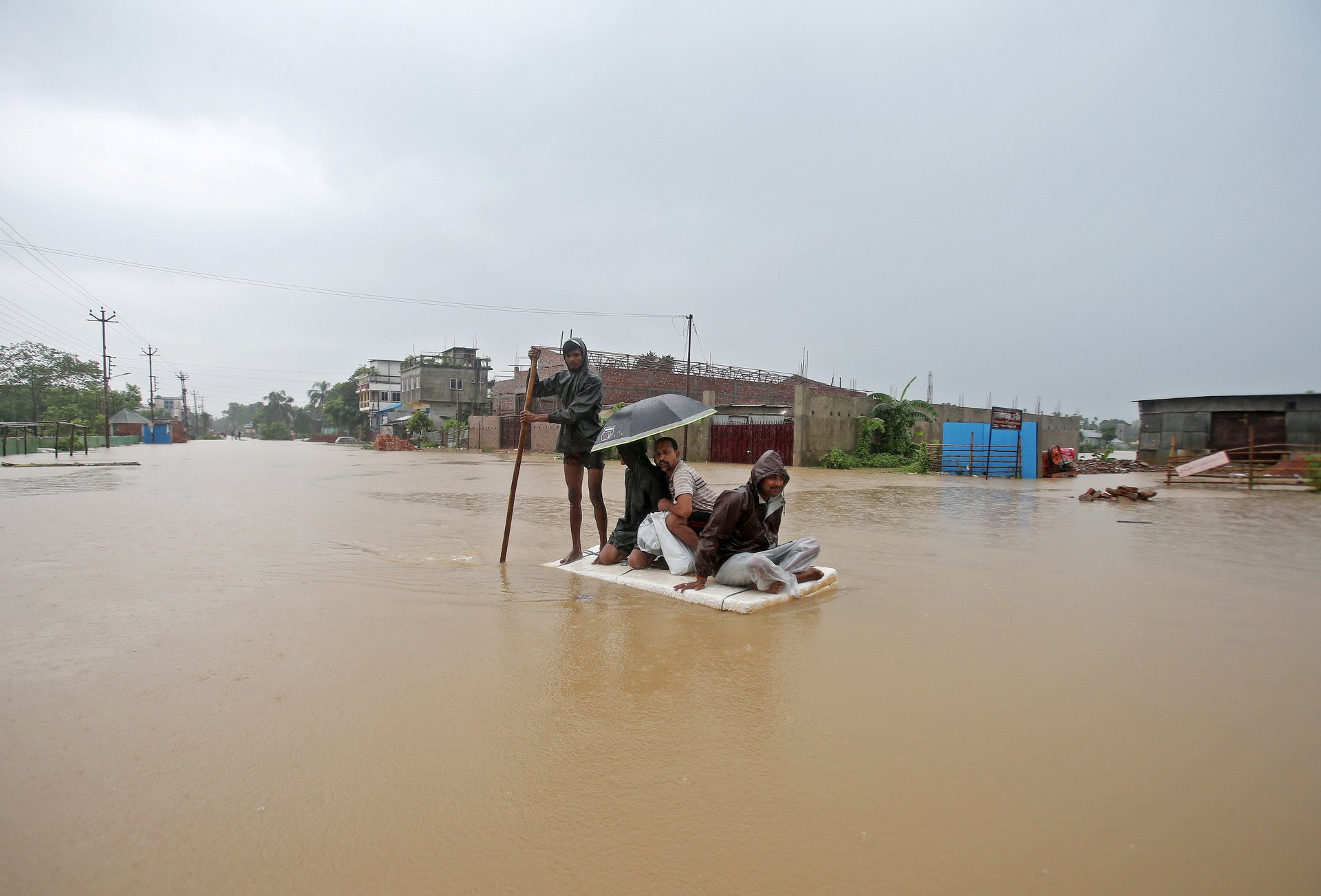
On the opposite coast, Mumbai, India’s financial capital in the western state of Maharashtra, was hit by tragedy when an old building crumbled to the ground on July 16. “So far, 13 people, including six males, four females and three children have been declared dead, while nine have got injuries and getting medical treatment,” Sachidanand Gawde, spokesperson for the National Disaster Response Force (NDRF) battalion, told the Press Trust of India. Twenty three people have been rescued so far, according to the news agency.
The rescue teams employed by the NDRF fear there are still several people trapped under the debris. The exact number was difficult to estimate because the building housed a small eatery on the ground floor, which was milling with customers in the morning.
Located in the bustling Dongri area of South Mumbai, the Kesarbhai Building had been flagged as “extremely dangerous” two years ago by the Brihanmumbai Municipal Corporation (BMC). There are almost 500 others on this list that have been marked down for demolition by the municipal body.
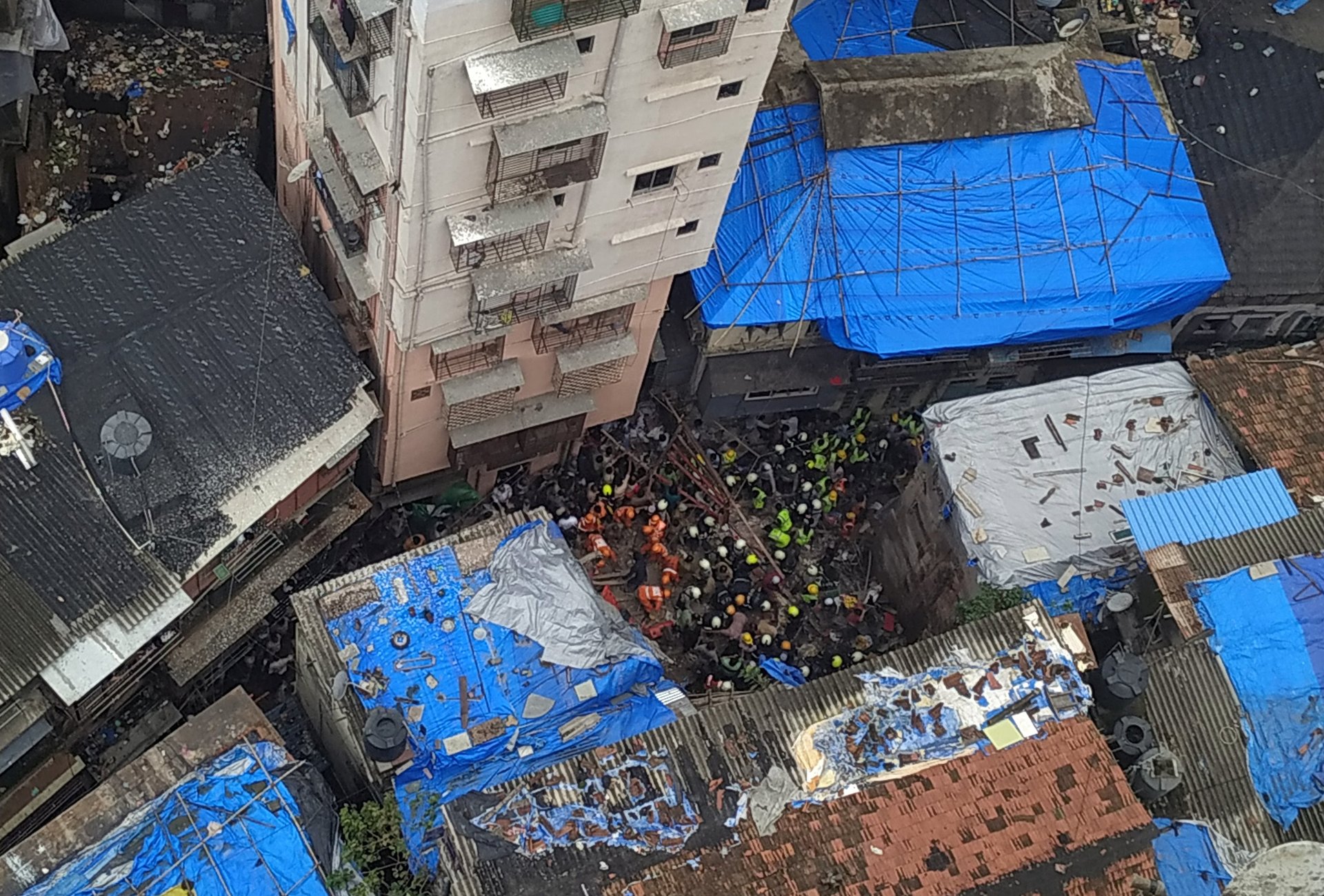
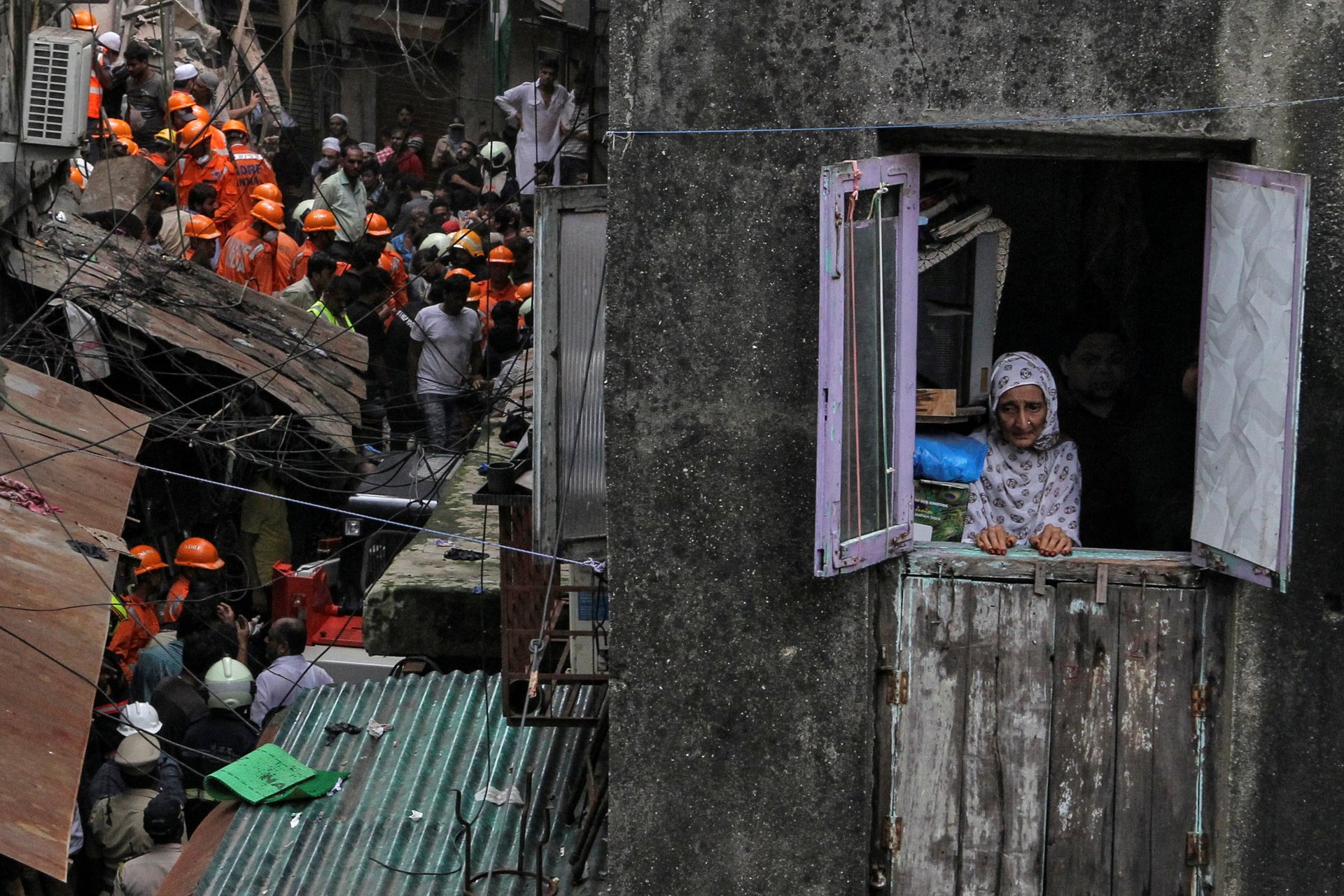
Meanwhile, Kerala, the southern Indian state that was hit by the worst floods in a century in 2018, has been put on “red alert” by the Indian Meteorological Department. The alert for heavy rainfall is expected to be in force till Friday, July 20. States along the Indian coastline have also been alerted to rough sea conditions and fishermen are advised not to venture into the choppy waters.